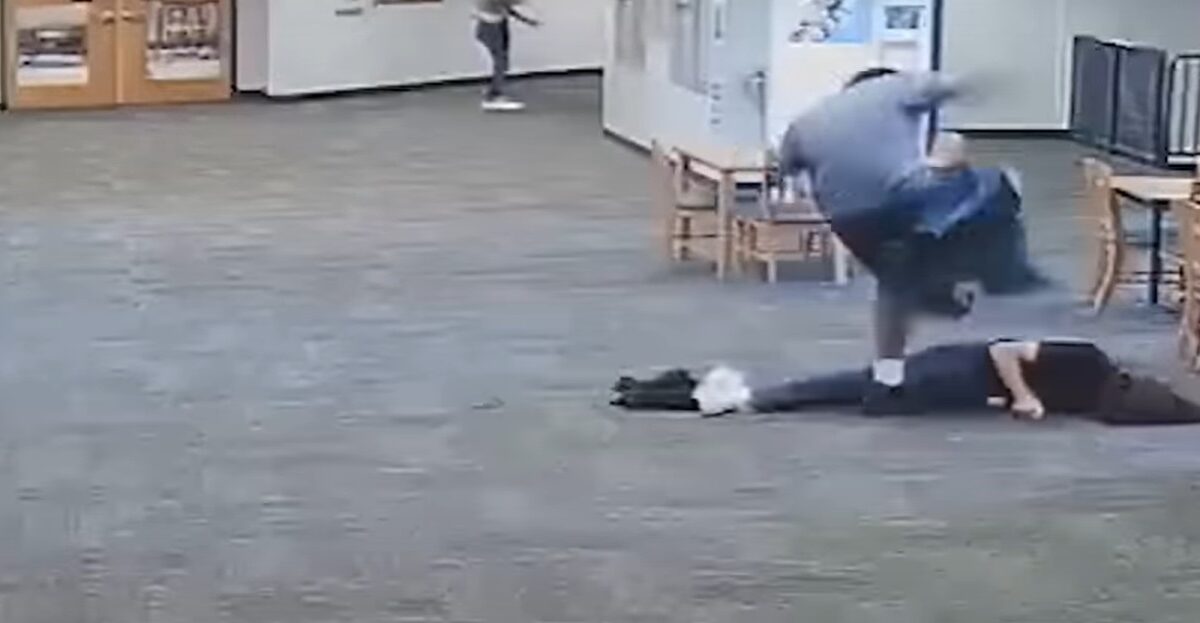Across the nation, teachers are feeling less and less safe in their own classrooms. In a recent survey, 14 percent of teachers reported that they faced physical violence from students, and one in three reported verbal threats or attacks.
Social media is filled daily with the latest videos of classrooms that have dissolved into a level of anarchy more fitting of a prison riot than a learning environment. This sad situation is a major reason that nearly half of teachers reported a desire to leave their profession or switch schools.
Any federal intervention in education ought to be laser-focused on solving this serious problem. But new policies from the Biden administration’s Departments of Education and Justice will only serve to exacerbate it.
In a new “Dear Colleague” letter, the administration said that data shows racial disparities in disciplinary rates for African American and Hispanic students. According to the letter, school districts where such disparities exist face investigation by the federal government — and thus a veiled threat of sanctions.
Such a move from the federal government is not new. The Obama administration released a similar Dear Colleague letter. Secretary Betsy DeVos later removed the letter during the Trump administration, but, like the villain in an ’80s slasher flick, it has once again risen from the dead under President Joe Biden.
If racial discrimination truly exists in American public schools, it should be rooted out. But all the evidence gathered during former President Barack Obama’s tenure suggests it does not, and that loosening disciplinary rules hurts the students it is designed to protect.
The politically incorrect possibility that there may be other reasons for the disciplinary disparity in schools is difficult to state under today’s woke paradigm. But there is evidence that engagement in negative behaviors — such as joining a gang — is higher among some minority students. African American students have also been found to be disciplined more often for infractions that come with prescribed rather than subjective penalties.
If racism were the driving factor in discipline, we would also expect Asian students to face more suspensions and expulsions as well. But studies have found that Asian students suffer these consequences even less than white students.
What really drives higher disciplinary rates for African American and Hispanic students is the concentration of underperforming students from high-poverty neighborhoods in schools that also happen to have large numbers of minority students.
What happens when we reduce student discipline to overcome phantom racism? Often, it means letting offenses go that should generate punishment, particularly if they are committed by students who are ostensibly being discriminated against.
Complaints abound from teachers who send students to the office for serious misbehavior only to have them return to the classroom unpunished. A lengthy history of warning signs, ignored in the name of wokeism, has even been blamed for mass shootings like the one at Parkland High School in 2018.
The Wisconsin Institute for Law and Liberty, where I work, has spent several years investigating this question. In a number of studies, we found that school districts that arbitrarily reduce suspensions have lower test scores and more reports of students feeling unsafe in the classroom. Some districts have even increased suspensions for non-minority students to reduce disparities, potentially subjecting white or Asian students to discipline for offenses that would not have otherwise warranted it.
The population of minority students tends to be concentrated in certain schools, meaning that the students who suffer most under federal disciplinary policies are the same students whom the policies are supposed to help.
As with most examples of federal intervention in education policy, school disciplinary policy is best left at the local level with parents, teachers, and principals who understand the conditions in their own schools.
Rather than exacerbating an environment of chaos by viewing discipline as racism, we should look at why certain groups of students are misbehaving more in schools. Our kids and teachers should not have to wait for the next conservative president to institute new policies that will make them feel safe in their local schools, but such may be the situation so long as wokeism, rather than reality, governs the Department of Education.








